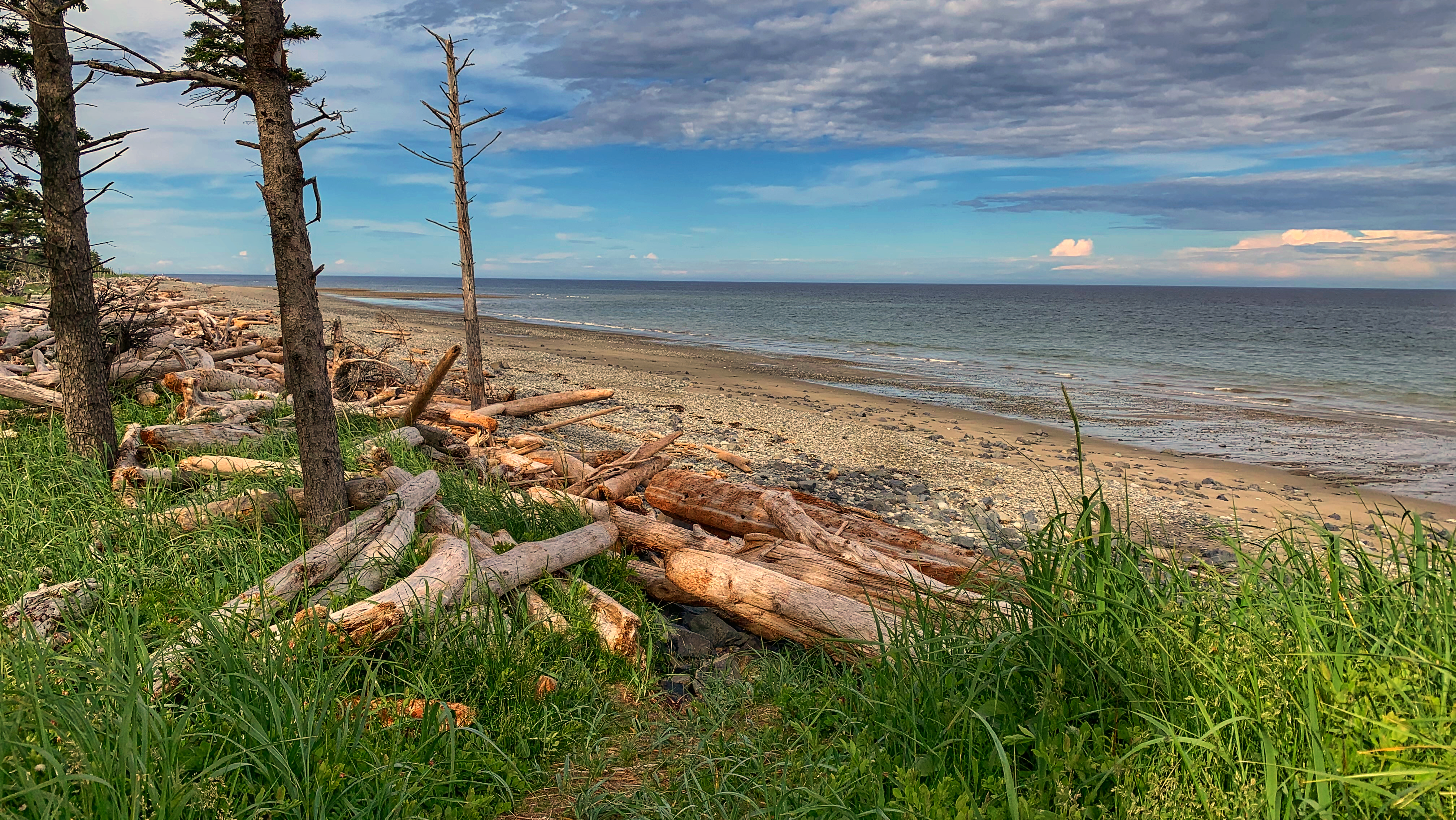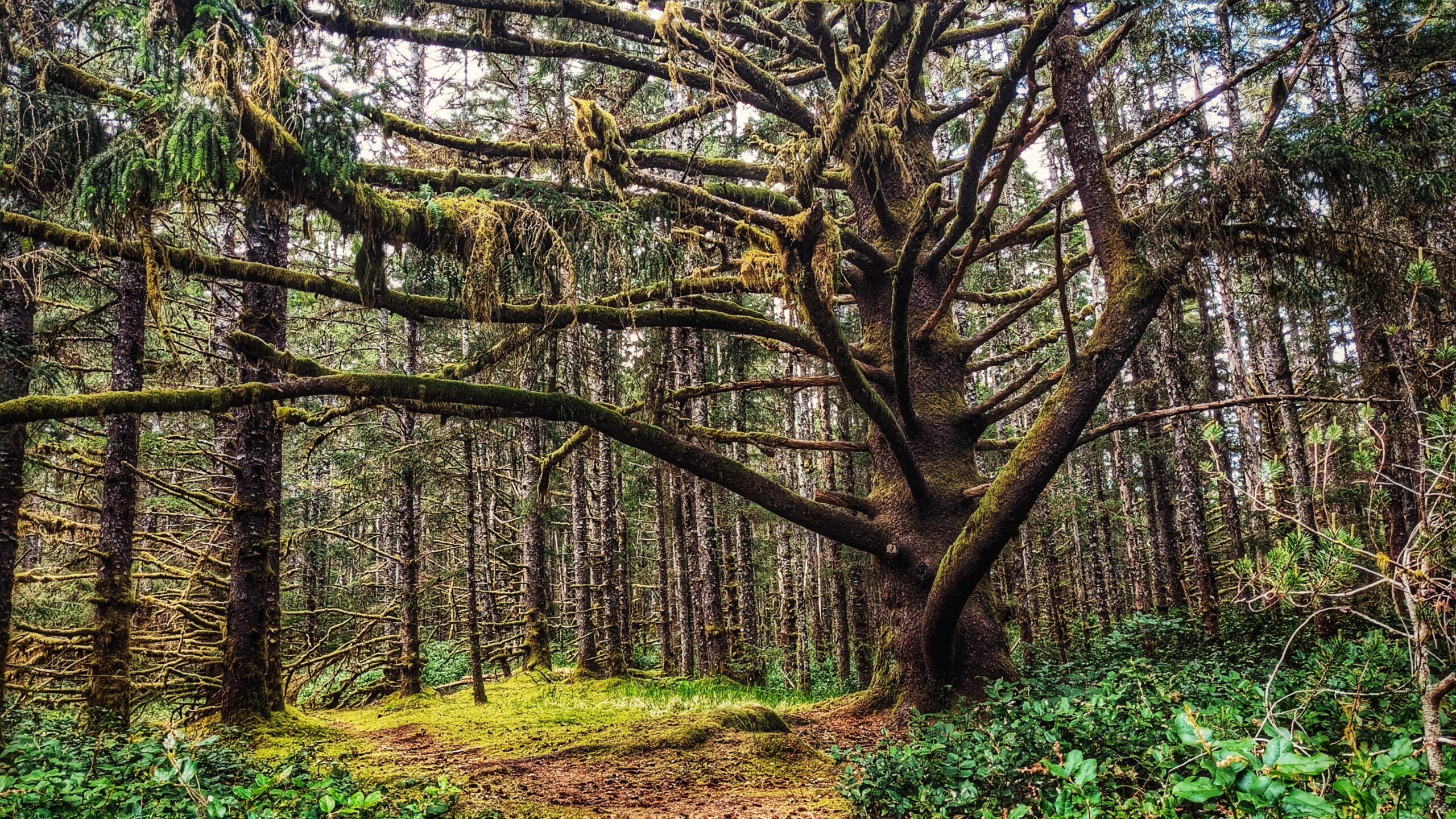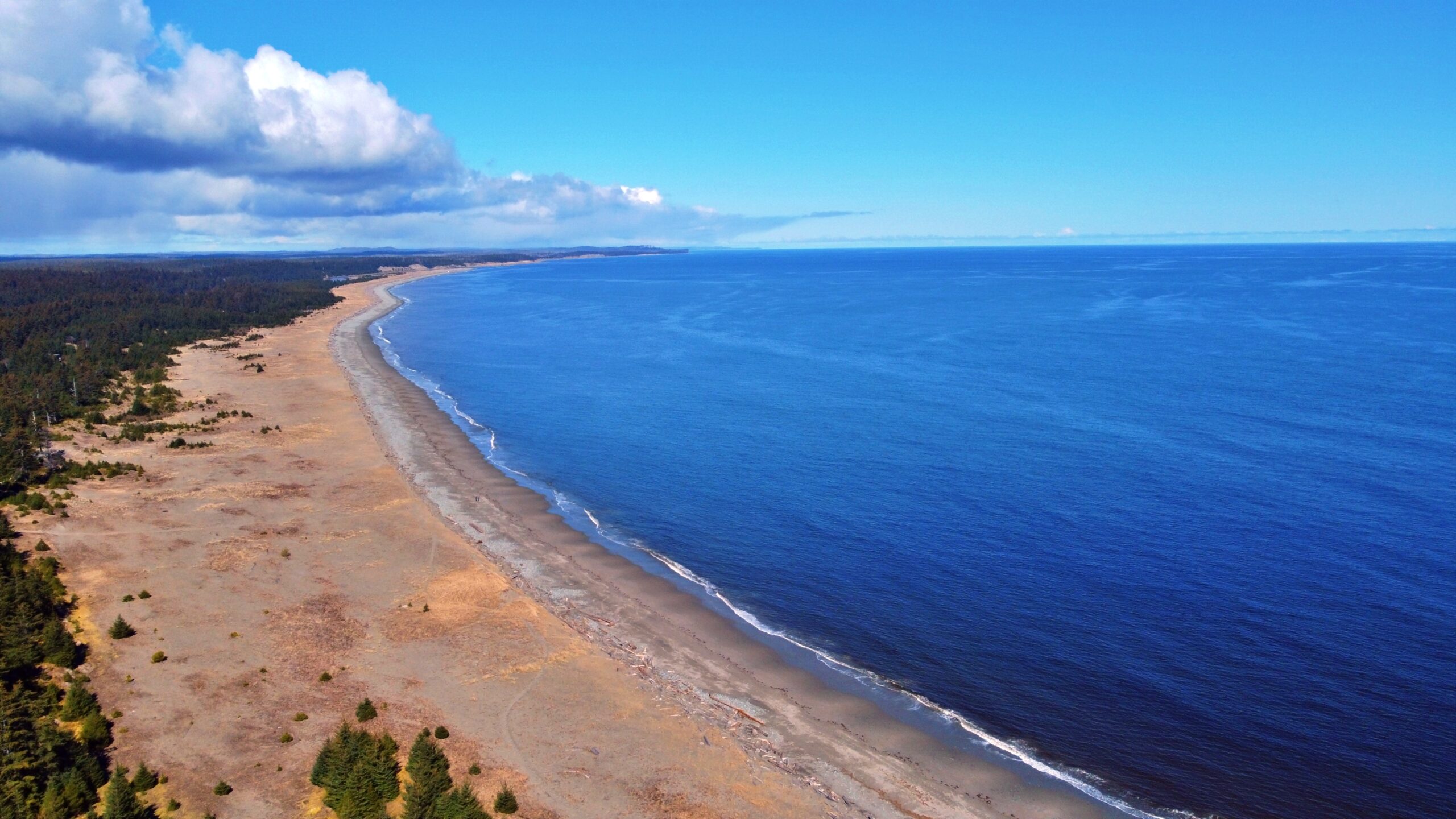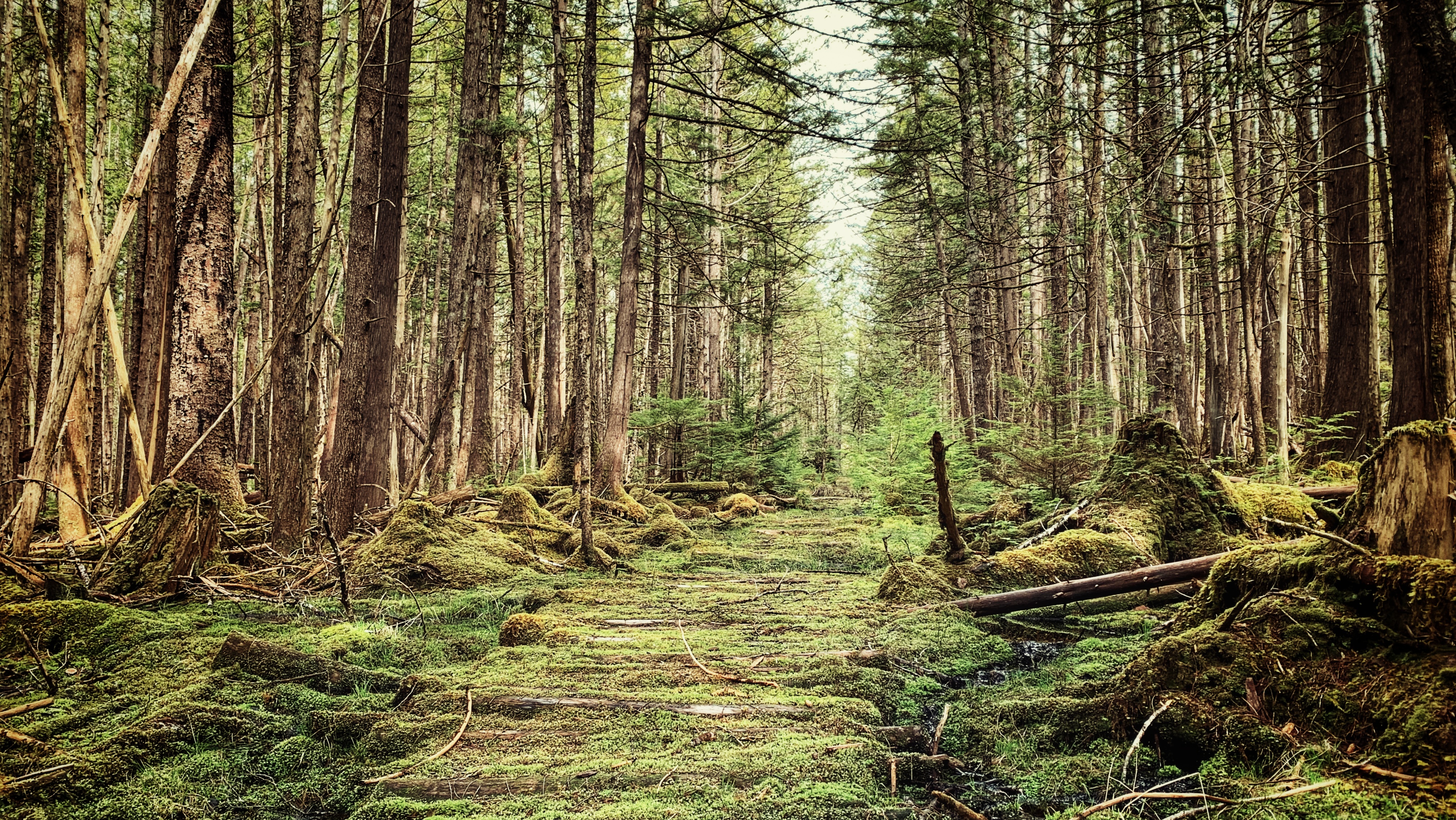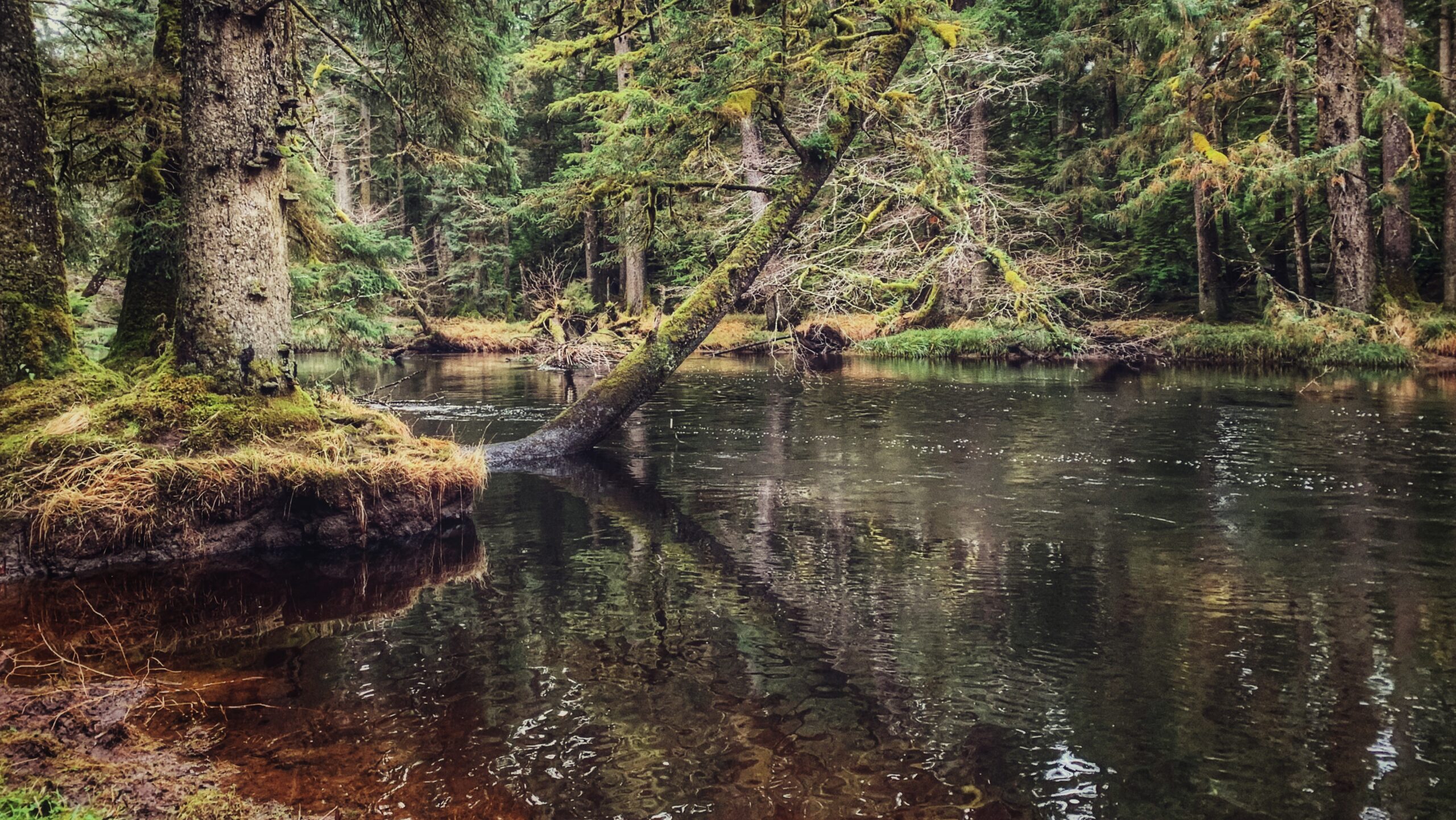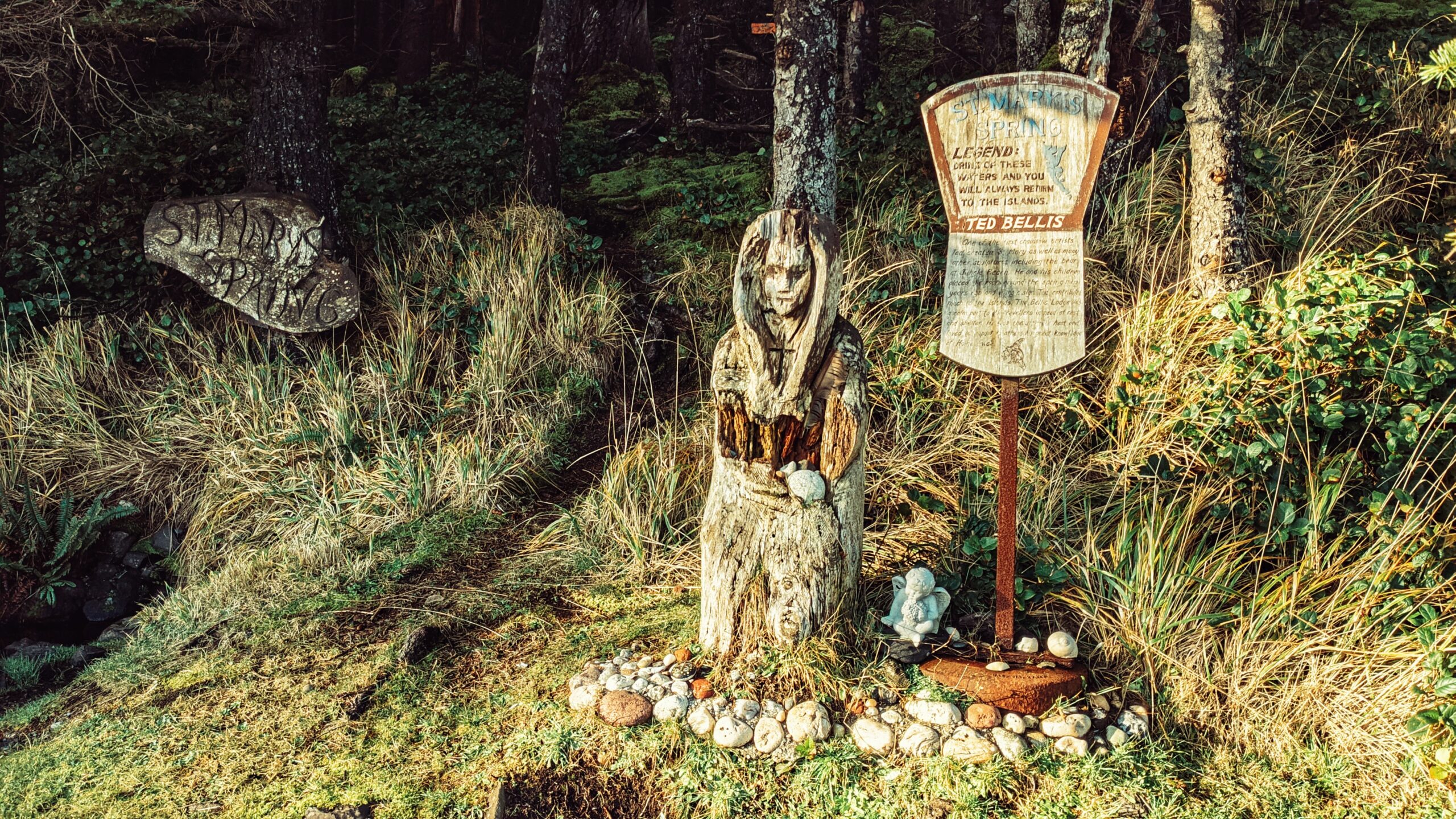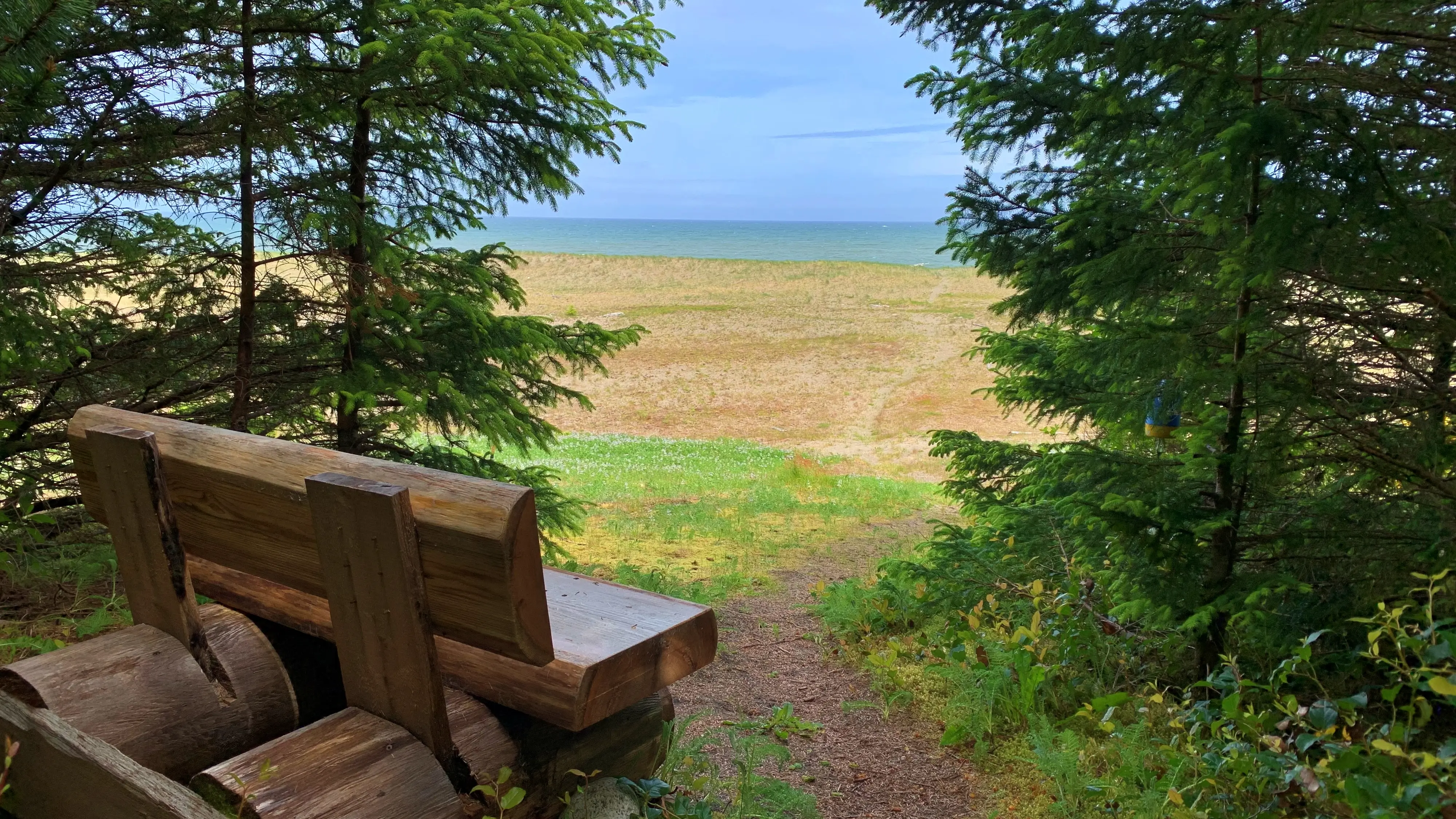Henderson describes this hike as “a family dune walk for a sunny day.” It certainly is family-friendly, but we’d recommend walking this beach – also known as “Wiggins Road Beach” in the current day – on a low tide; otherwise, you’ll spend the duration hiking over stones of various sizes. The sandy beach is really only exposed during low tides.
Tag: tlell trails
Susan’s Trail is unmarked, but its location is familiar: As you drive in towards the Misty Meadows campsite you will inevitably spy “the big tree” to your left. This marks the start, or trailhead, of Susan’s Trail. You can park your car on the side of the road or drive a couple of hundred meters forward to the campsite and park there before beginning your hike.
From a recreational perspective, Misty Meadows Beach Loop Trail serves as a nice introduction to the wonders of Naikoon Provincial Park. It offers beach access and some nice hiking.
Drive down Lawn Hill Road until you cross Lawn Creek Bridge. From here, and directly ahead, you’ll see a joke sign: “Violators will be prostituted.” This rather humorous sign indicates a private property; however, to your LEFT you will see a small yellow sign posted on an alder tree: “OLD WAGON ROAD.” This sign essentially signifies the start of your hiking adventure, but it is not the trailhead.
At about the 1-kilometre mark, you should see some pink and blue flagging tape to your RIGHT and a small footbridge. This is the start of the North Road and “Pontoons Wilderness Historic Interpretive Route.” If you cross the bridge and walk a few meters, you should also see a trailhead marker for Prettyjohn’s interpretive route to your LEFT.
Wiggins Road Trail FeaturesPopular fishing accessAccess to Tlall Conservancy A note of caution: One should avoid hiking this trail after heavy rainfall. Sometimes the banks of the Tlell River will overflow, flooding sections of the trail and making them virtually impassable. ABOUT The Wiggins Road trail is an unmaintained 1.5km out-and-back route that follows the Tlell […]
Unlike most places on Haida Gwaii, St. Mary’s Spring Trail is quite young in terms of its history. At the beginning of the 20th century, this area was known as “Duncan’s Well,” named after an early homesteader. It is said that travellers used to stop and re-hydrate their horses at the small well. Beginning in the early 1920s, however, Annie Richardson took it upon herself to name the spring after one she’d known in England – St. Mary’s.
The Andrews Place Road Trail is a short out-and-back route located at the end of, well, Andrews Place Road in Tlell. The trailhead is not formally marked; however, it can be seen adjacent to a hydro pole at the end of the cul-de-sac, next to Sandy House. At just 250 meters in length, it only takes 5 minutes to complete this trail and emerge, first, onto the flat sand dunes and then the pebbly beach below.

